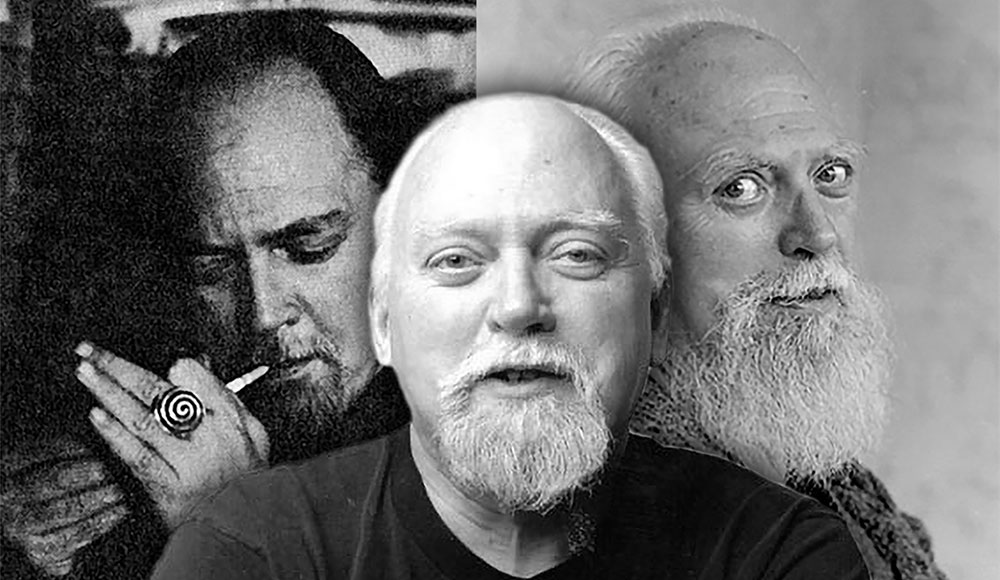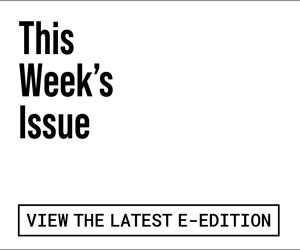“I think the only solution to the American political problem is to make the government go somewhere else. Find a docile and more submissive people and govern them, and leave us the fuck alone, and thank you very much.” —Robert Anton Wilson, 2000
Let’s start with the fact that Robert Anton Wilson Day is on July 23, which is not his birthday, nor his deathday (which should certainly be a new word added to our vernacular, immediately).
An embossed mayoral proclamation signed in 2003 by Emily Reilly, Santa Cruz’s mayor at the time, states that the writer and futurist—a longtime Santa Cruzan who passed on Jan. 11, 2007, and whose “meme-morial” was held at the Cocoanut Grove—is a genius and “a model of courage and intelligence in an age sadly short on heroes.”
Genius. Funny. Polite.
More importantly, RAW—as he’s known—left behind a legacy, including a holographic map, that can lead us out of this abysmal labyrinth.
There’s something happening here
Wilson is also a noted American author. The Illuminatus! Trilogy, written with Bob Shea in 1975, gave a nitro-injection of conspiracies into the underground and changed the way popular fiction evolved. Hard to imagine author Dan Brown’s obsession with Opus Dei without Wilson.
Wilson was also an oddly prescient futurist who experienced visions, and beyond-this-world experiences, that grounded him in the idea that things are not what they seem. In today’s political climate, his ideas would be “detention center” worthy.
“You should view the world as a conspiracy run by a closely knit group of nearly omnipotent people—and think of those people as yourself and your friends,” RAW wrote.
But what it is ain’t exactly clear
As the world burns, everyone is glued to their little devices, watching tiny flickering images. Wilson lived a life that explored what happened to the people in Plato’s allegorical cave when they realized that they were only watching shadow puppets. What is outside the cave?
Also known as Maybe Day, July 23 is when, theoretically, everyone on the planet would employ the word “maybe” into every declarative sentence.
If you are celebrating Maybe Day, you might say things like, “We are the greatest nation in the world, maybe.” Or, “With this ring, I vow to love you forever, maybe.” And, “I pledge my allegiance to the flag, maybe.”
Gabriel Kennedy—an actor, musician, and author who studied extensively with Wilson—published Chapel Perilous: The Life & Thought Crimes of Robert Anton Wilson in 2024. It’s a copiously assembled, meticulously crafted, definitive timeline of Wilson’s life. From the gut punches of his daughter Luna’s murder in Berkeley to the passing of his equally brilliant wife, Arlen, no leaf is left unturned by Kennedy.
There’s a man with a gun over there
Kennedy believes that Wilson’s support of conspiracies is impossible to understand without a historical context.
“So much revolved around the Kennedy assassination, and then the assassination of Bobby Kennedy, and then Martin Luther King,” Kennedy says from his home in Los Angeles, where he sits atop the largest collection of Wilson ephemera in the world.
“All those things were shocks to the collective system. 1968 was this peculiar crossroads in America, in which you had a lot of riots, and a lot of youth rebellion” Kennedy says. “A weird, apocalyptic sense of conspiracy emerges.”
Telling me I got to beware
Kennedy mentions the Church Committee, 50 years ago, when it became officially known that the CIA’s MKUltra program had been illegally turning US and Canadian citizens into guinea pigs. Subjecting humans to a barrage of experimental drugs that were administered in prisons, churches and universities. And the CIA had one main goal: mind control.
Geopolitically, in the 1960s, it was no better. The CIA was committing atrocities, like actively sabotaging the first prime minister of the Democratic Republic of the Congo, Patrice Lumumba. Which led to Lumumba’s assassination.
“Then you have the actual Iran Contra conspiracy. The examination of that, which was nipped in the bud because Oliver North went before Congress and acted macho,” Kennedy laughs.
Paranoia strikes deep
With proof that our own government was as nefarious as the youth in the 1960s believed, is it no wonder that Wilson felt a need to shake things up?
“I would say that probably the greatest conspiracy theory of all conspiracies might be this generation. There is a massive number of conspiracy claims and conspiracy theories. Real wacky conspiracies like Q. Or that JFK Jr. is still alive and will appear at a football game,” Kennedy scoffs.
“I think that the massive, quantum, nearly infinite number of conspiracy theories is now—whether intentionally or not—the conspiracy. Because what it does is camouflages any actual conspiracies,” Kennedy says.
According to Kennedy, investigative journalists with links to the mainstream have to be very careful; they don’t want to be seen as being on that (cuckoo) conspiracy theory playing field.
So, if you flood the shore with a tsunami of conspiracies, the real deviousness is obscured by a tentacled skull that shoots ink.
Into your life it will creep
And what about those people, our friends, neighbors and strangers, who hold fast to hateful belief systems—and are encased in echo chambers? How do we reach them?
“When you’re awash in conspiracy theories, it forms a memeplex in your psyche. The different conspiracies coalesce and form coalitions, and they become a package. Physical material suffering might break the spell, but maybe not,” Kennedy concludes.
It starts when you’re always afraid
Robert Anton Wilson was one of those influential authors who might not have steered my life but definitely took the wheel for a while. Once I found his writings in RU Sirius’ magazine High Frontiers, Wilson kept popping up.
Unlike Carl Jung, whose writings on synchronicity were barely readable, Wilson leaned into it. Wilson made noticing synchronicities more fun than looking for Pokémon. Difference being that Pokémon never came looking for you.
I moved to California with the intention of finding the right Graduate School. In July 1986, I was stuck between the California Institute of Integral Studies and Sonoma State University. I couldn’t decide, so I started pondering “what would Robert Anton Wilson do?”
I picked up a copy of the daily paper, the Marin Independent Journal. The cover said, “Orange UFOs Shaped like an X Seen over Sonoma.”
X marks the spot with orange UFOs!
Step out of line, the men come and take you away
On Nov. 27, 1986, I was in my dorm room at Sonoma State University—reading Wilson, and watching the Macy’s Day Parade. I had just made an omelette and put it on my childhood plastic Superman plate.
The Superman float, in the ’86 Thanksgiving parade, had torn an arm on a tree in Central Park, and was floating down Fifth Avenue with just one right arm facing forward in what looked like a Nazi salute. At that exact moment, my Superman plate cracked in half, with just the image left of old Supe having just one arm extended.
And as I write this, an image of Trump as Superman is popping up on multiple screens.
This is why I dragged my feet on this tribute. Engaging with Wilson is opening yourself up to synchronicities that will rattle you. I mean, orange UFOs? I’ve never even told anyone that story, because it’s so preposterous (maybe).
Did I mention that when I first talked to Gabriel Kennedy, and asked if anything weird happened to him, when he first started writing Chapel Perilous, he said, “I saw an orange UFO.”
“In conclusion, there is no conclusion,” to quote RAW. “Things will go on as they always have, getting weirder all the time.”
Buy Robert Anton Wilson’s books at hilaritaspress.com, For more information on Gabriel Kennedy, dive into chapelperilous.us.
More Arts & Entertainment in this issue:
Perennial Punk Rock Chameleons The Mekons
Sondheim Magic in the Grove: Into the Woods













